FOREWORD
he dressing room is a strange space. Intensely private, full of superstitions, whirling with thoughts and emotions, yet simultaneously intensely public – people running in and out, mic checks. An intimacy of dressers. Last-minute notes being given. Jokes cracked. ‘The front curtain isn’t operational tonight, so we need to gather in five to re-block the opening…’
A flurry of ablutions, hilarious observations shared from the journey in from the so-called ‘real’ world to this, our deeply unreal reality of the half hour until act one beginners, when we throw ourselves into the ring and see what happens. Will it happen tonight?
Into this swirl, for the last thirty-seven years, Simon Annand has been quietly welcomed. Only he, who has spent so long inside rehearsal rooms capturing the dynamic and expressing the movement of performers in action – the muscular conversation that is putting on a theatrical production – would be able to enter the backstage area, camera in hand, and cause nary a ripple…
It is as difficult to capture actors and creative teams in unselfconscious action as it is to arrest birds in flight. His aim is to illuminate the process (and in the case of Annand’s book The Half, to present prelude and aftermath) in a way that invites an understanding in the viewer. And now, in Time to Act, he deepens this exploration further.
But there lies Simon’s skill. He is inside this process with his subjects. His sensitivity to atmosphere is, quite simply, astonishing. His decades-long examination of lives lived in the theatre is an invitation into very private worlds, at the second before they become public.
It is an opportunity, in a world obsessed with outcomes, to understand procedure – the constant, restless process of actors searching for becoming, for danger, for risk, for the journey itself, without expectation that a definitive destination will ever be reached.
The readiness is all.
‘Act one beginners – stand by, lighting, hair, wardrobe, wigs and make-up!’
Cate Blanchett
9


An early photo, about to go on stage as a servant at the Lyric Theatre Hammersmith in Bill Gaskill’s production of The Relapse, 1983. For two years had been serving at the bar, eager to experience what it was like to actually be on the stage, with a live audience staring back at you. The servant had no lines and his main function was to accompany the lead actor Simon Callow, who played Lord Foppington, at one point carrying him around in a Sedan chair.
SIMON ANNAND’S WORLD
I cannot precisely remember when I first encountered Simon Annand. But around 2004 I do remember a meeting to view his work in the (now closed) V&A Theatre Museum in Covent Garden, and finding it immediately fascinating. One does not need to be an actor or theatre professional to feel the compelling power of Simon’s photographs – images of an actor in the final moments before he or she steps onto the stage in front of an audience. One does not even need to know the actor or the character they are about to play. Even without these, the photographs elicit a pure human empathy for the act of preparation, the glimpse into a private moment when the actor must leave all thoughts and concerns of the day behind and transform him or herself into whoever he is to play that night. It is both imaginable and unimaginable.
It has been my pleasure to have known Simon Annand since then. This early meeting led to the first of several iterations of an exhibition created at the V&A with Simon, which in various forms toured the UK and the continent over several years. For this first exhibition in 2005, we named the show The Dressing Room, in part because we were unsure whether the general public understood the term ‘the half’ and its significance, in part because we conceived the idea of exhibiting the photographs in the actual dressing rooms of the small studio theatre at the heart of the V&A Theatre Museum. Along with the psychological insights the photographs revealed, their window into the dressing rooms of major stars and West End theatres was itself fascinating.
Contrary to the glamorous image of theatre dressing rooms that we might imagine, most people would be surprised to see the cramped conditions in many British theatres today. Particularly in older theatres, where there is no space to expand backstage, facilities can be scruffy, and even modern ones can be functional and confined – they are rarely luxurious. Even so, modern dressing rooms are generally an improvement on those of the past. In Elizabethan Britain, actors dressed in communal changing rooms in the ‘tiring house’ (the attiring house) behind the stage. When, from 1660, women were also allowed to act on the public stage, separate dressing areas were provided for them in the larger theatres. Then, as now, the stars were given private rooms in which to prepare, whilst the rest of the company shared. In smaller theatres, facilities were often communal, and touring companies had to make do with any available space.
Although leading actors may have had their own rooms, privacy was not a priority – anyone could visit the ‘tiring rooms’ to see the actors and glimpse backstage life. Thankfully for actors, this has changed – ‘the half’ is recognised as a precious and necessary half-hour of calm and privacy. But thankfully for us, Simon’s photographs take us into this unseen world, to capture these moments of intense concentration, transformation and nerves that have been hidden from public view for centuries. Alongside revealing so
13


much of the real person transforming into their character, they also highlight how modern performers – even the stars – often have to make do with the facilities used by their Victorian predecessors. This also speaks volumes about the profession and the commitment of those that work in it.
In curating The Dressing Room at the Theatre Museum, we went all out to evoke both the atmosphere and the psychology of ‘the half’. With Simon’s photographs as the centrepiece of every room, we furnished the dressing rooms as if they were in use, with notes and flowers, used ashtrays, make-up and hair accoutrements. We even created a soundtrack in this private space in the countdown to performance; a mixture of Tannoy announcements, from ‘This is your quarter hour call. Fifteen minutes to Act I. Your quarter hour call. Thank you’; to semi-private announcements, ‘Can whoever owns the red Beetle parked in Bay B please move it’; to the actors’ imagined own reflections, ‘I wonder if that newspaper’s theatre critic will be in tonight’; and even unwanted thoughts that could crowd into an unquiet mind: ‘Did I remember to turn the oven off?’
Simon started this body of work thirty-seven years ago, and the continuously expanding collection has gone from strength to strength and been seen around the world. Since opening at the Theatre Museum in 2005, The Dressing Room became The Half, and travelled to nineteen venues over thirteen years, including the National Theatre in London, the Wales Millennium Centre in Cardiff, the Arles Photography Festival in France, the V&A in London, the Royal Shakespeare Company in Stratford upon Avon, the Bakhrushin State Theatre Museum in Moscow and the Player’s Club in New York.
In recent years, social media has given us an insight into the ‘backstage’ world (in all its forms) of the famous, but the images people choose to share of their own lives are different, rarely capturing them at their most private and vulnerable, as Simon’s photographs do. However ‘natural’ they seem, we know there is an element of staging that comes with projecting an image of oneself online. To be able to capture actors in moments of natural, unposed concentration demands a very strange dual skillset: having the confidence to be the only other presence in the room, snapping away at such a personal, high-stakes and intimate moment, whilst also being able to become somewhat invisible and allowing the actor to undergo their necessary and usually solitary preparation.
above LEFT: Eve Arnold looking at my book, The Half in 2008. was fortunate to get to know Eve in her later years. Given her deep knowledge of both photography and actors, when she confided in me ‘if only I had thought of this idea’, the encouragement gave me a moment of infinite clarity and affirmation.
above right: Maggie Smith, Interpreters Queen’s Theatre, 1985. She was extremely generous with her time. We spent two unforgettable hours chatting before taking a single photo.
opposite: Anthony Hopkins, Pravda, National Theatre, 1986. In those days, interviews were part of the session and Tony explained at length why he had returned from America. His portrayal of Lambert LeRoux was the strongest performance of power ever saw.

14 15
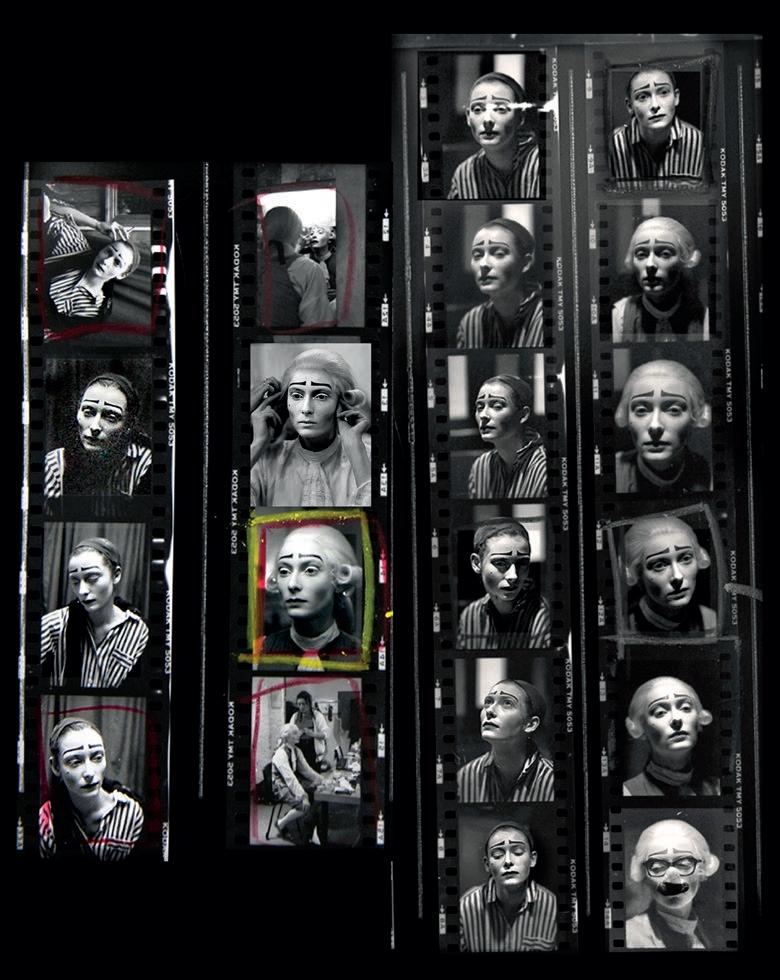

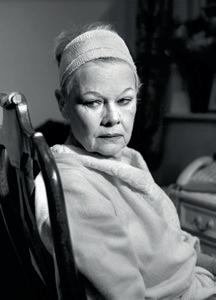
Simon has always attested that the photographs are not an attempt to chronicle a certain period in London theatre, or to suggest that the productions chosen are better than others which may not have been included. It is all about the actors – who have always been personally selected by Simon, rather than commissioned for a magazine or newspaper.
opposite: Tilda Swinton, Mozart and Salieri, Almeida, 1989. Tilda is photogenic doing just about anything.
above left: Griff Rhys Jones, Charley’sAunt Lyric Theatre Hammersmith, 1983. The first dressing-room photograph ever took. Griff was playing an ebullient character, which contrasted with the melancholic atmosphere in his room. It was this that gave me the idea for a book on ‘the half’, a project which continues to this day.
above right: Judi Dench, The Royal Family, Theatre Royal Haymarket, 2001. Judi has been very supportive of The Half project, ever since the early 1980s. For this am eternally grateful. She is universally loved for her work, her sense of humour and her kindness.
So who is this man behind the camera? Quietly spoken and thoughtful, Simon’s personality lends itself perfectly to his line of work. He possesses great knowledge and appreciation of theatre, and of the art and practice of photography, allied with precision and determination to achieve only the best. Simon’s enthusiasm for the theatre began as a pupil in the 1960s at a school with its own Victorian replica of a Greek theatre. But the first time he was paid to shoot a major production came in the 1980s at London’s Old Vic theatre, when Jonathan Miller became artistic director. Since then, Simon has taken production photographs and been fortunate to work on a number of important productions (including War Horse and Jerusalem) and for other great directors. These experiences gave Simon the opportunity to work on a wealth of different shows, from the modern classics of Ibsen, Chekhov, Strindberg, and Pinter, to Shakespeare in many forms, as well as musicals, pantomime, opera, experimental and physical theatre, international circus and even burlesque. This book brings these strands together, avoiding any hierarchy. Simon, looking back across all these styles and forms, says: ‘Each one has its own complexity and each one is as difficult to perform as another.’
Some of the images are intended to be ‘fly-on-the-wall’ in their approach and others are not. What links them is an aesthetic which is essentially humanist, rather than predatory. The actors are seen as workers, not celebrities. His photographs reveal a fragility and humanness, without undermining the courage that comes with being a performer. They also give an insight into the intimacy of the actor’s dressing rooms and the various ways they mentally prepare: a calming cigarette; a final bit of chat with co-stars; the finishing touches of make-up; or perfecting the body language of their character… Simon is on the actor’s side and his camera respects all facets of their preparation before going live on stage.
Victoria Broackes, Senior Curator, V&A Department of Theatre and Performance
16 17





HALF HOUR CALL 15 MINUTE CALL 5 MINUTE CALL CURTAIN UP 25 87 167 215

HALF HOUR CALL


26
left: HAYLEY ATWELL, The Pride Trafalgar Studios, 2013 Hayley likes to have fun. She has lent her immense talent to a variety of projects, including the Captain America films and numerous stage roles. A wonderfully outgoing and inclusive personality, I have never heard a bad word said about her.
opposite: ANNABEL SCHOLEY, Passion Play Duke of York’s, 2013 This looks like New York but is actually St Martin’s Lane in London.

The Scottish actor, whose voice has a distinct timbre all its own, had been asked to play Vanya with a Lincolnshire accent.
ruth
Playboy of the Western World
Old Vic Theatre, 2011
In the early days of her career. The physical wall marks the boundary line between the world outside and the world of the play inside.

29
opposite: John Hannah, uncle vanya St James Theatre, 2014
right:
negga,
The first exercises of the evening and Claudie is getting a sense of the auditorium from her audience’s point of view.
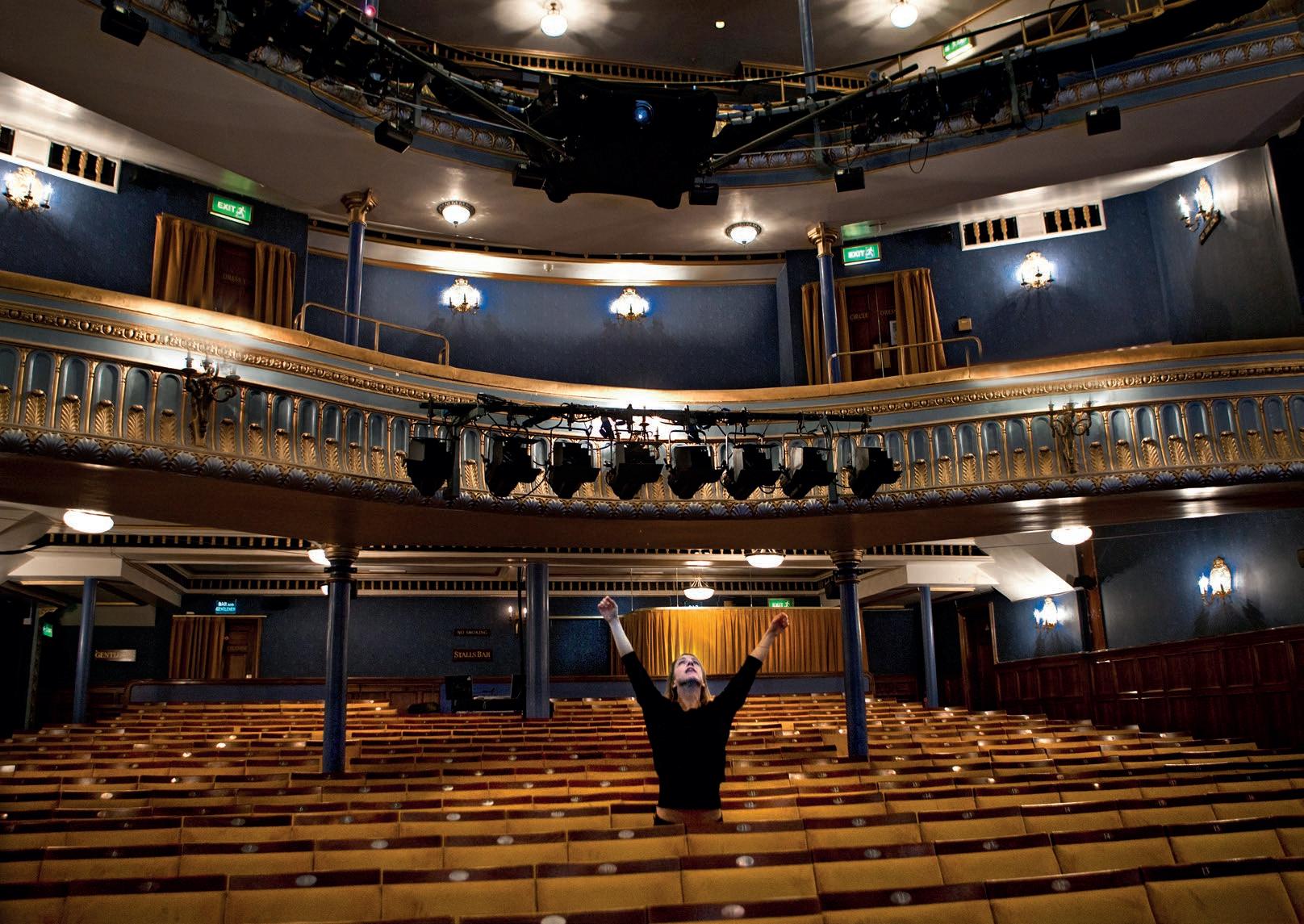
30
CLAUDIE BLAKLEY, Chimerica Almeida, 2013

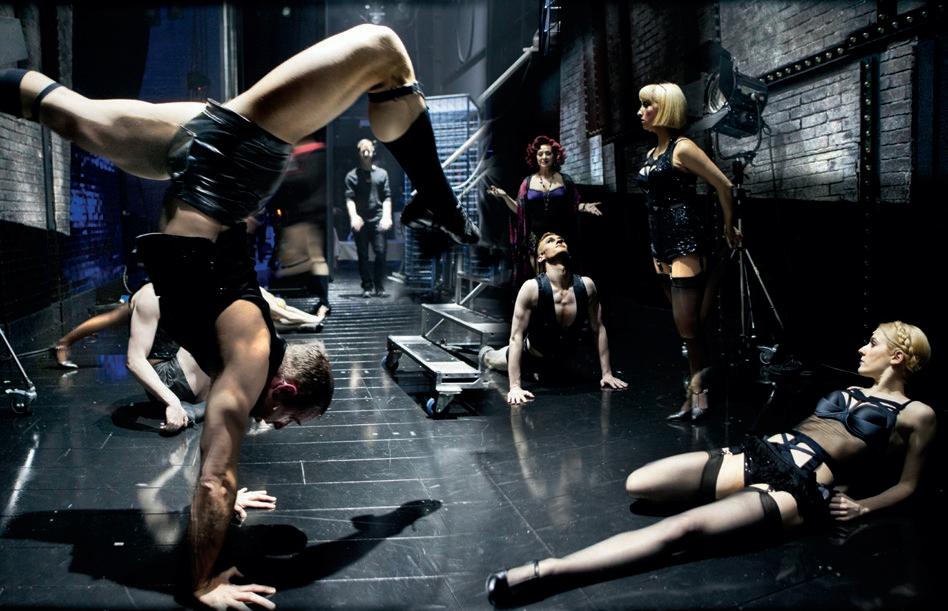
opposite: dakota blue richards, Arcadia, Churchill Theatre Bromley, 2015
Preparation … making sure her physical muscles are loose and the body is centred.
above: NUNO SILVA, CYDNEY UFFINDELL-PHIILLIPS, JESSICA ELLEN, JOHN BRANNOCH, ALLESSIA LUGOBONI, EDD MITTON, LAURA TYRER, Cabaret Savoy Theatre, 2012 Warming up.
33


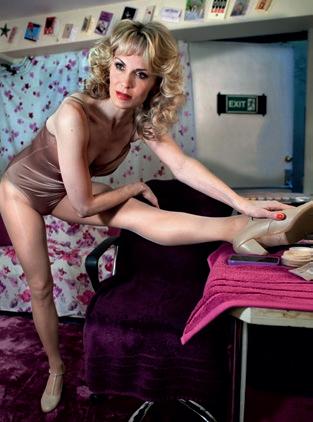
WARM-UP
Getting the body ready for a performance is vitally important, especially if it is a very physical production. Every actor has their own personal way of warming up.


34
above: SAM BUTTERY, Taboo Brixton Club House, 2012
TOP: STEPHEN WEBB, Rocky Horror Picture Show Milton Keynes, 2019
right: LEIGH ZIMMERMAN, A Chorus Line, Palladium, 2013
Far right: LEON MORAN, Matthew Bourne’s Nutcracker! Sadler’s Wells, 2012
opposite: DAISY LEWIS, Amazonia Young Vic, 2008
Daisy has the agility of a circus performer, which she embraces to the full. A larger than life person off stage she reminds me of a character from one of Evelyn Waugh’s novels.

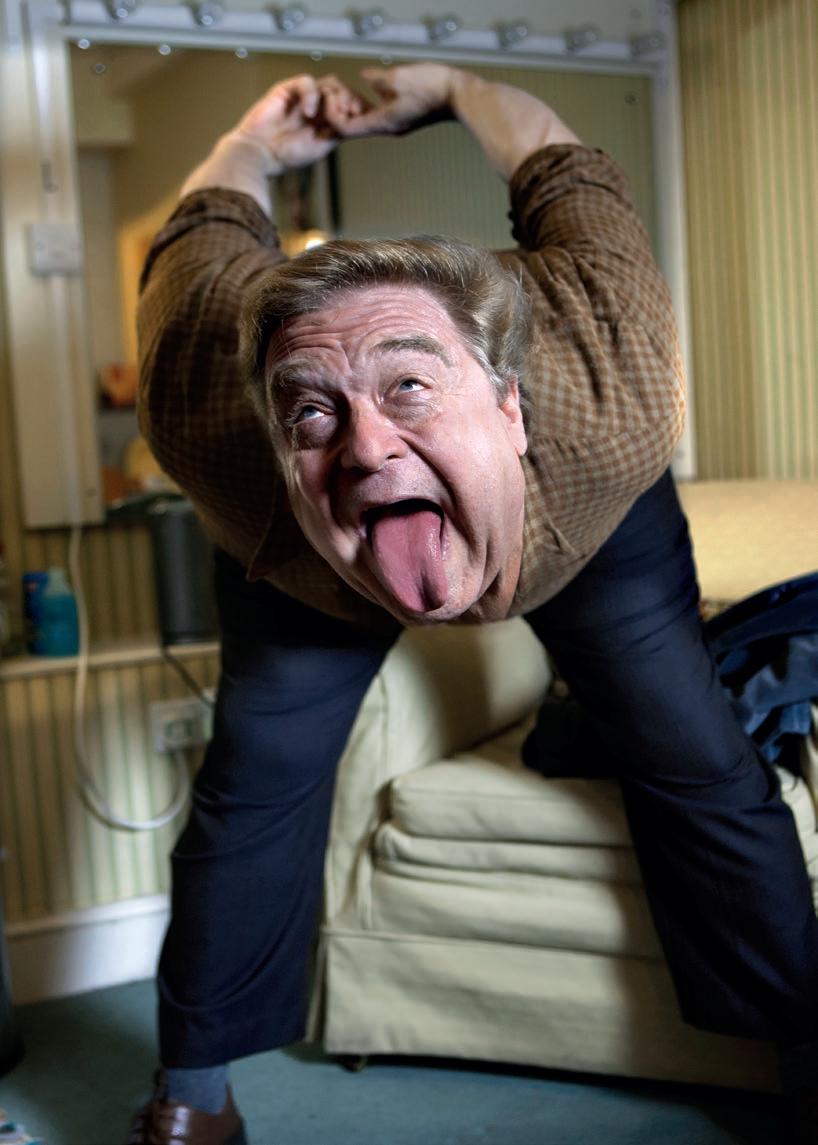
36
above: CHARLIE RUSSELL, The Play that Goes Wrong, Duchess Theatre, 2014
Vocal exercises, which are essential to keep the facial muscles as well as the voice in good shape.
opposite: John Goodman, American Buffalo Wyndham’s, 2015
Everyone said the eminent A-List American star was so polite and professional it might be difficult to take a lively photo. Not so. Wonderful session. Fabulous guy.
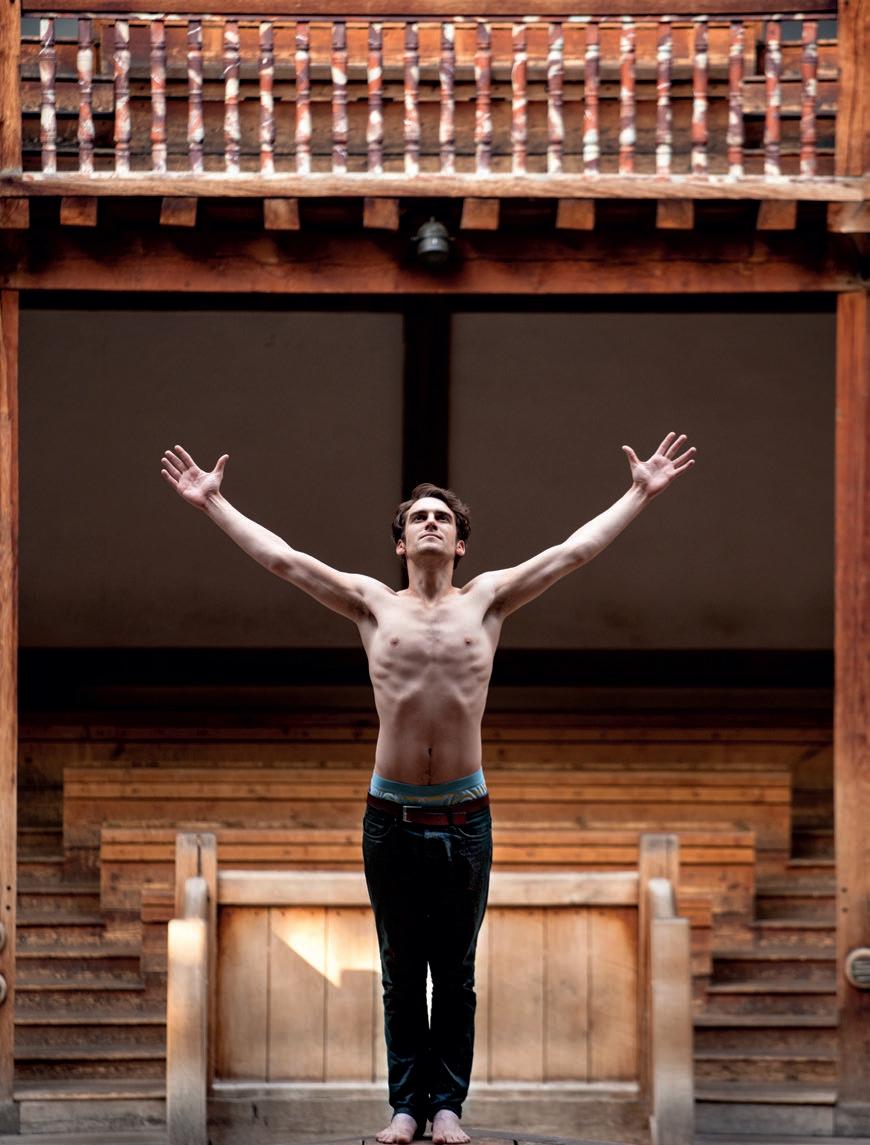
opposite: JOSHUA SILVER, A Midsummer Night’s Dream Shakespeare’s Globe, 2014 Stretching in the beautiful wooden surroundings of The Globe, which are exposed to the open air.
below: TOM HIDDLESTON, Coriolanus Donmar Warehouse, 2014 Known for TheAvengers,The Night Manager and Thor Tom is preparing for a role full of physical and mental challenges.

39


40
above: HARRIET WALTER, JENNY JULES, Julius Caesar, Donmar Warehouse, 2012
This was an all-female production, with Harriet playing Caesar.
opposite: BEN WHISHAW, ANDREW SCOTT, Cock, Royal Court, 2009
Two charismatic stars, early in their successful careers, enjoying an intense discussion during the warm-up.


43
opposite: DANIEL KALUUYA, Sucker Punch, Royal Court, 2010 Through intensive training Daniel managed to lose several stone to play the boxer Leroy Davidson in Roy Williams’s play.
right: MICHELLE FAIRLEY, Julius Caesar Bridge Theatre, 2018 Michelle has always been highly respected as an actress, and after landing a lead in Game of Thrones she now has more casting power. Her sense of satisfaction is palpable.


44
above: ELEANOR NORTON, ALAN CUMMING, LANCE HORNE, Alan
Cumming Sings Sappy Songs
The Hub Edinburgh, 2016
The irrepressible Alan is leading a warm-up before an evening of hilarity and music.
opposite: SIMON RUSSELL BEALE, Deathtrap Noel Coward Theatre, 2010
It has always been a delight to photograph Simon and witness the unbounded pleasure he takes in playing so many varied roles.

A true gentleman, and his dog seemed to mirror his personality perfectly.
opposite: JEREMY IRONS, A Long Day’s Journey into Night, Wyndham’s, 2018
One of the few people who makes all heads turn when entering a room.
This is the first image of our session.
Jeremy is still reminiscing about his day, before preparing for the lengthy role of James Tyrone in Eugene O’Neill’s classic.
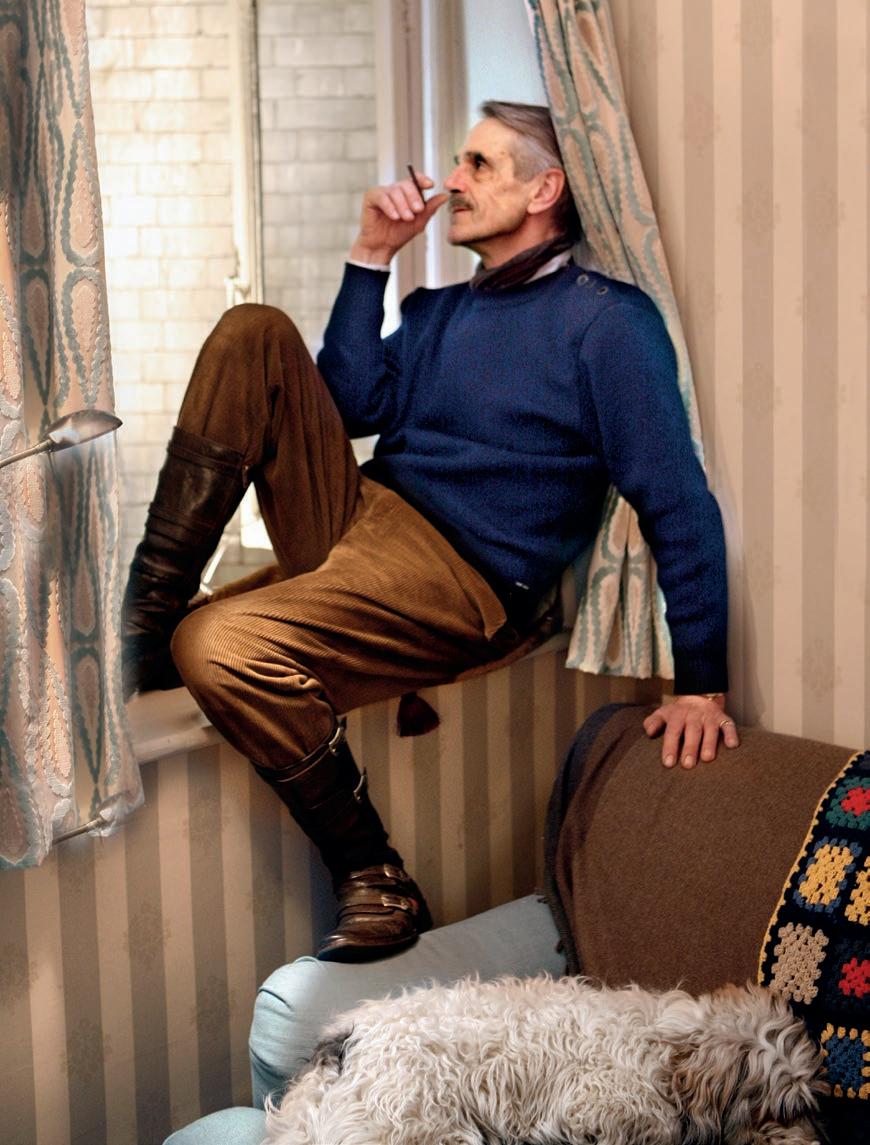
46
left: JAKE GYLLENHAAL, Sunday in the Park with George New York City Center, 2017


 TCate Blanchett, Ethel Barrymore Theater, 2017
TCate Blanchett, Ethel Barrymore Theater, 2017






































